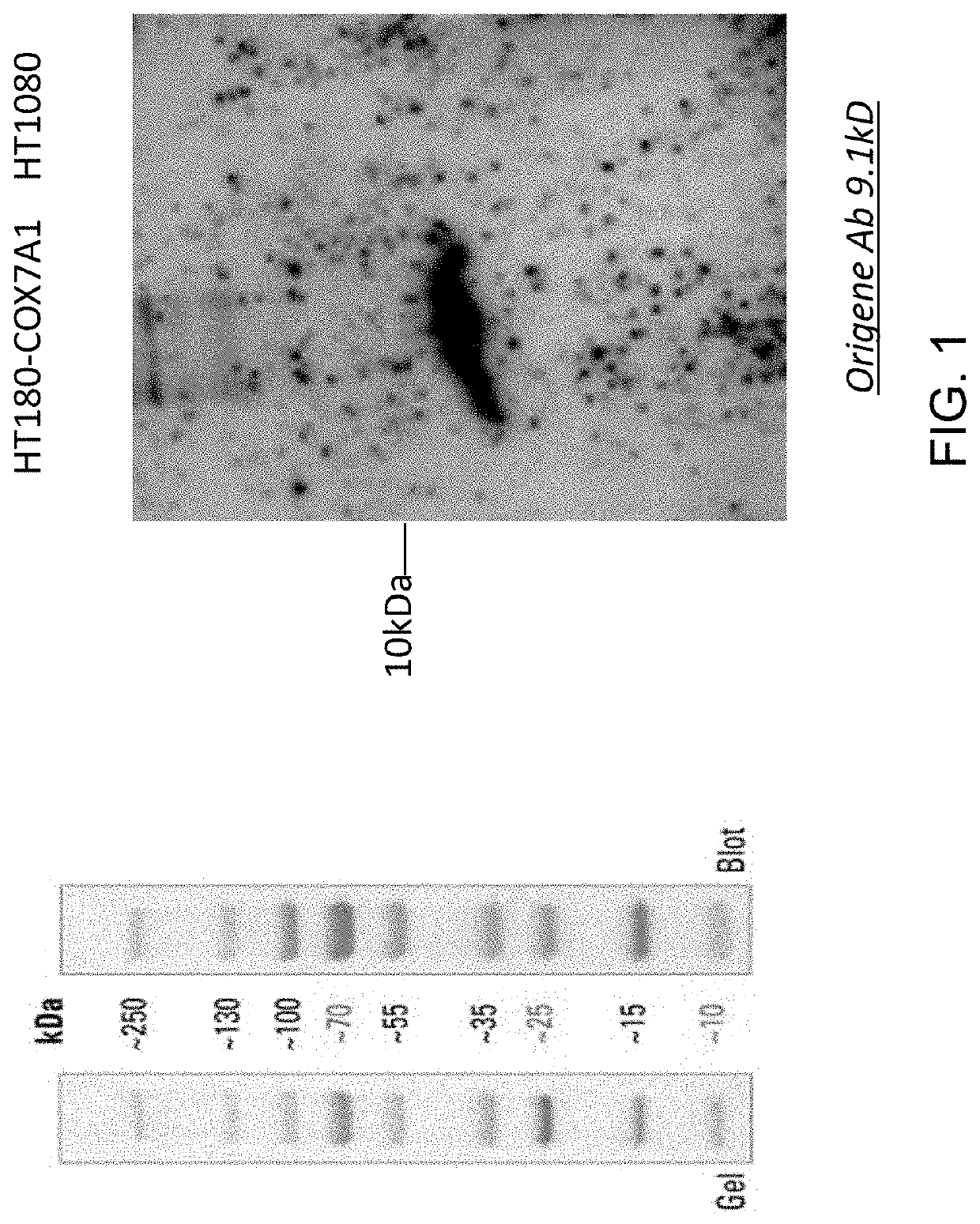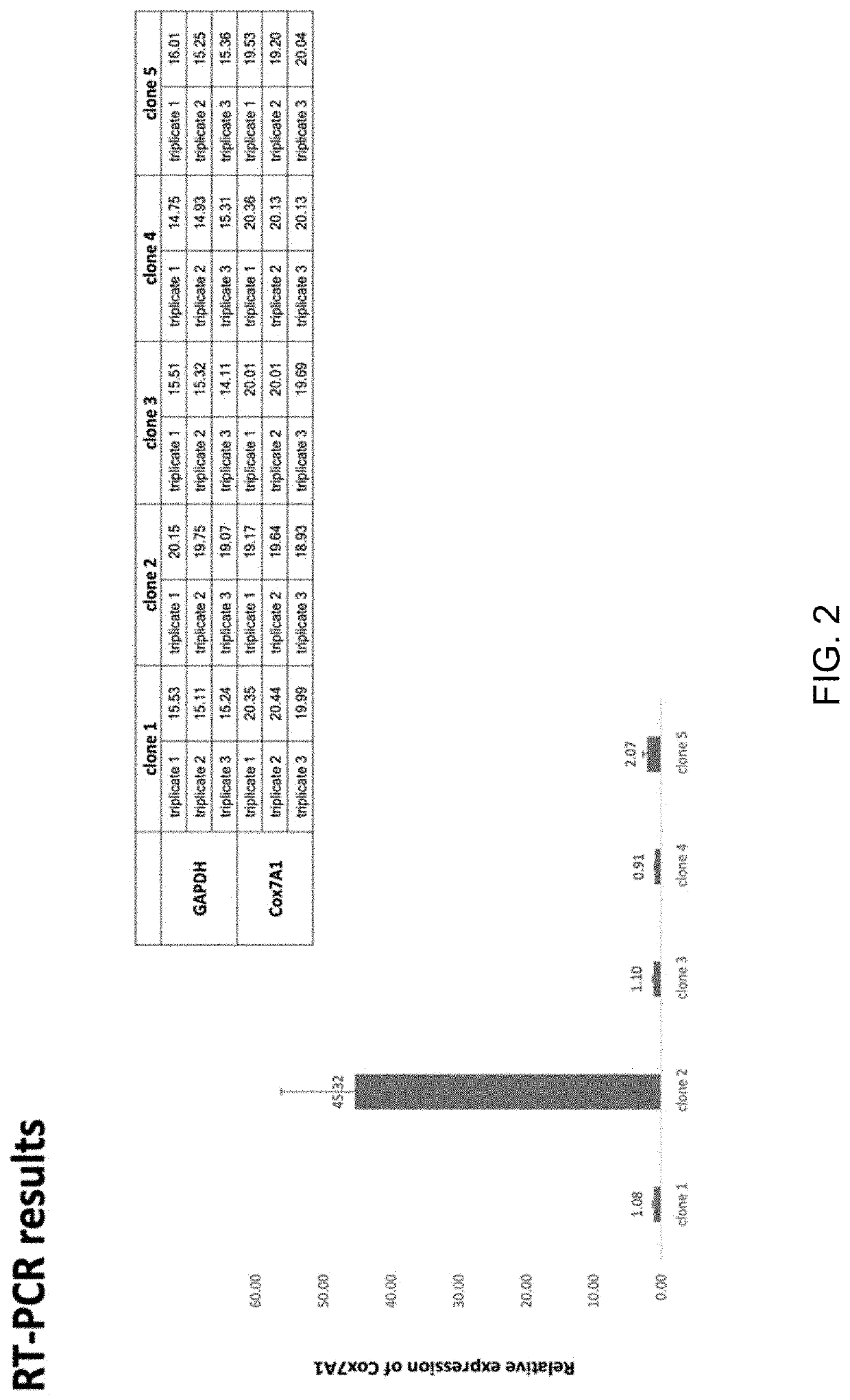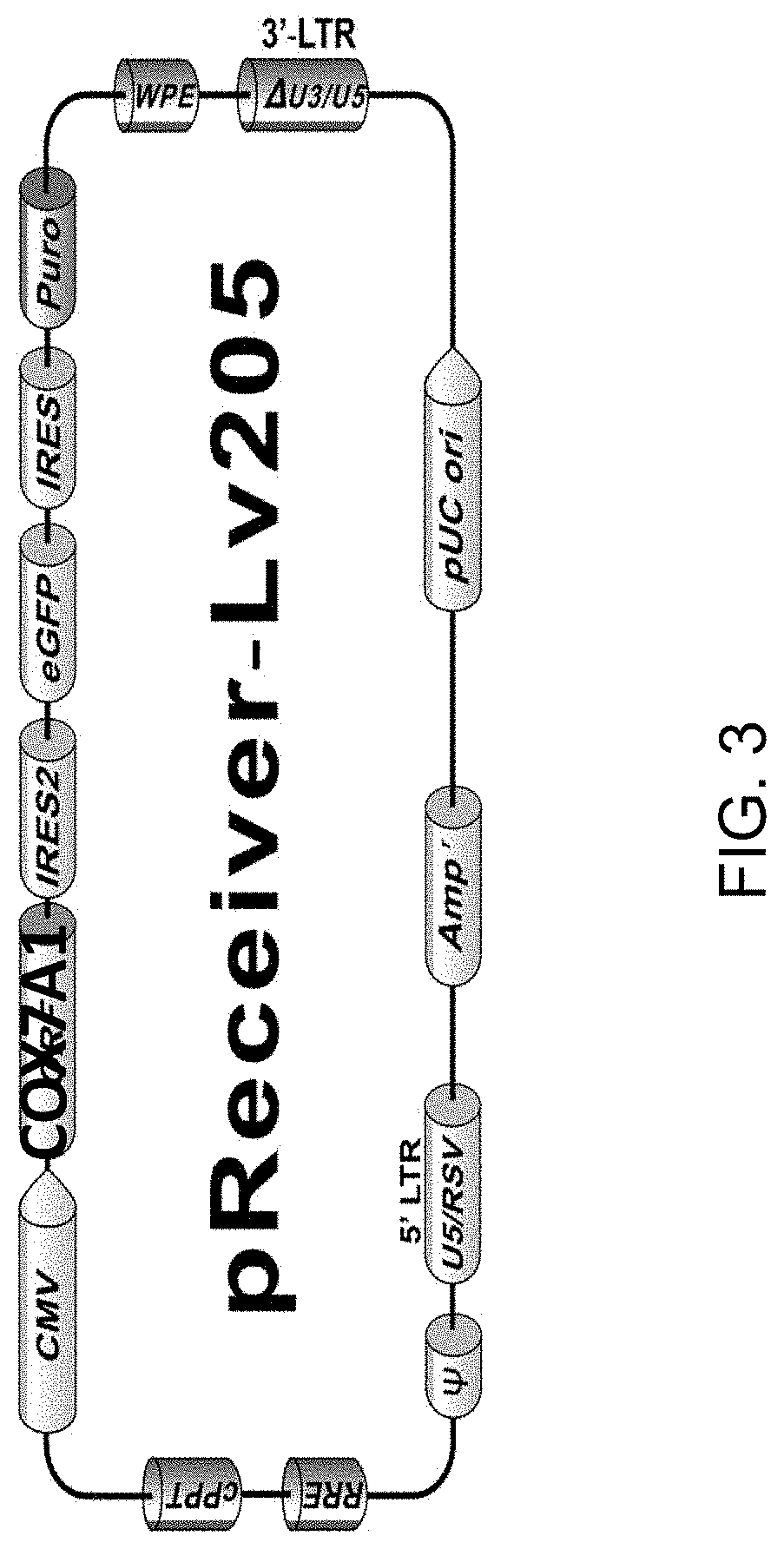Compositions and methods for detecting cardiotoxicity
a cardiotoxicity and composition technology, applied in the field of compositions and methods for detecting cardiotoxicity, can solve the problems of inability to accurately model the normal adult myocardium of the cardiomyocyte, and inability to detect human cardiac drug responses accurately. , to achieve the effect of improving the structure and/or function of the cardiomyocytes
- Summary
- Abstract
- Description
- Claims
- Application Information
AI Technical Summary
Benefits of technology
Problems solved by technology
Method used
Image
Examples
example 1
gle Gene Metabolic Reprogramming
[0147]A deep neural network approach was used to compare hundreds of transcriptomes from embryonic, fetal and adult cells including the PureStem® cell bank of hundreds of proprietary clonal embryonic progenitor cell lines (West). This led to the discovery of COX7A1 as a marker of the embryonic to fetal transition. COX7A1 is not expressed during embryogenesis and is first expressed at the start of fetal development. Its expression increases through early adulthood and is maintained into old age.
[0148]COX7A1 knockout mice were created and resulted in the discovery of a glycolytic shift in heart cells from the knock-out compared to control mice. These data are consistent with repression of COX7A1 in highly glycolytic human embryonic stem cells (Shyh-Chang) and cancer cell lines (Warburg effect supporting anabolic growth) (Robinson). The metabolic impact of constitutive expression of COX7A1 was studied in two transfected cell lines, 4D20.8 (an embryonic p...
example 2
of COX7A1 Overexpression to Metabolically Mature CM
[0149]CRISPR / Cas9 was employed to knock-in a tetracycline-inducible COX7A1 expression cassette into a safe-harbor locus for use in this project. This was a novel use of COX7A1 expression to push hESC-derived CM into a more mature metabolic phenotype. The use of this technology will result in minimal disruption of the expansion or cardiomyocyte differentiation potential of ESI-017. Safe harbor loci, such as AAVS1, represent genomic positions where integration of a transgene does not disrupt the expression of adjacent genes on the chromosome, and positions at which transgenes can be efficiently and accurately integrated using available methods, such as CRISPR (Pellenz). The lack of disruption of normal gene expression is important, as differentiation of hES cells into target cell types involves the sequential activation (and suppression) of large numbers of gene networks. Older methods of random gene integration run the risk of disrup...
example 3
nt and Validation of COX7A1 Inducible Donor Plasmid
[0152]A conditional expression cell line is developed according to the invention using CRISPR / Cas9. Transfection conditions for the ESI-017 cell line have been optimized by transfection with GFP-expressing plasmid under three electroporation conditions using a Neon system. An optimal 10-15% transfection efficiency was achieved at 1200V, 30 ms, 1 pulse.
[0153]A range of drug concentrations (puromycin) was tested for conducting effective transient drug selection after transfection. 0.3 ug / ml was selected for experiments. The complete genome sequence of the ESI-017 line was used to evaluate guide RNA sequences for a safe harbor loci integration. A CRISPR / Cas9 plasmid vector system was constructed in which the COX7A1 coding sequence is expressed from a promoter utilizing the tetracycline-inducible activator (TET-ON system). Donor plasmid assembly was evaluated by complete DNA sequence of the construct.
[0154]Validation of the expression o...
PUM
| Property | Measurement | Unit |
|---|---|---|
| mass | aaaaa | aaaaa |
| mass | aaaaa | aaaaa |
| mass | aaaaa | aaaaa |
Abstract
Description
Claims
Application Information
 Login to View More
Login to View More - R&D
- Intellectual Property
- Life Sciences
- Materials
- Tech Scout
- Unparalleled Data Quality
- Higher Quality Content
- 60% Fewer Hallucinations
Browse by: Latest US Patents, China's latest patents, Technical Efficacy Thesaurus, Application Domain, Technology Topic, Popular Technical Reports.
© 2025 PatSnap. All rights reserved.Legal|Privacy policy|Modern Slavery Act Transparency Statement|Sitemap|About US| Contact US: help@patsnap.com



